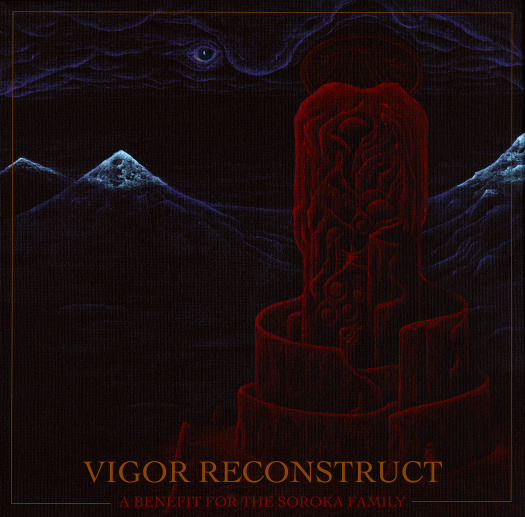By Calen Henry.

Artwork by Adam Burke.
Despite being written in 2019 Spirit Adrift's fourth album,
Enlightened in Eternity, sounds inexorably linked to 2020. By splitting
the difference between the somber doom metal of
Chained to Oblivion
and the righteous classic metal vibe of
Divided by Darkness
it comes off as hope battling through existential dread, exactly how 2020 has
felt for many of us. It also sounds like Nate Garrett and Marcus Bryant simply
had a blast recording it. Garrett has a gift for taking a collection of metal
riffs and melding them into catchy, anthemic songs that straddle the line
perfectly between classic metal and arena rock anthems.
These new songs are more diverse than any single prior album. From the punky
intro to "Cosmic Conquest" through the full speed metal banger "Harmony of the
Spheres" to the dramatic trudging doom metal of closer "Reunited in the Void".
They lay the foundation for some genre hopping classic-metal worship that
comes off as reverential, rather than hackneyed. Like with the songs
themselves Garrett cherry picks whatever metal bit or piece he pleases and
adds some delightfully out there touches from a late track key-change to
spooky chains clanking. The lead work fits the feel of every song and twin
guitar leads abound. Many of the parts have the air of familiarity from
classic metal albums, but nothing (apart from that one riff in "Stronger than
your Pain") calls back to a specific band or album. It just feels right, like
"comfort metal".
The choruses are as catchy as the riffs, but the lyrics dive a bit deeper than
simply arena rock pizazz. A vein of hope runs through the album, but so does
death and pain. The same dichotomy of downcast doom metal and triumphant
classic metal that runs through the riffs permeates the lyrics. Many of the
songs are about hope and triumph, but they're often about hope through pain
and darkness and death, and the strength to face them head on. So still pretty
metal, but 2020 metal, not 1980 metal.
2020 has been a crazy year and much of my music consumption has been
revisiting favourites and discovering classics I'd missed in the metal
pantheon so some new music completely fell off my radar
Enlightened in Eternity almost did until Max asked me to cover it, and
I'm glad he did. It's exactly the metal album my 2020 needed.

























